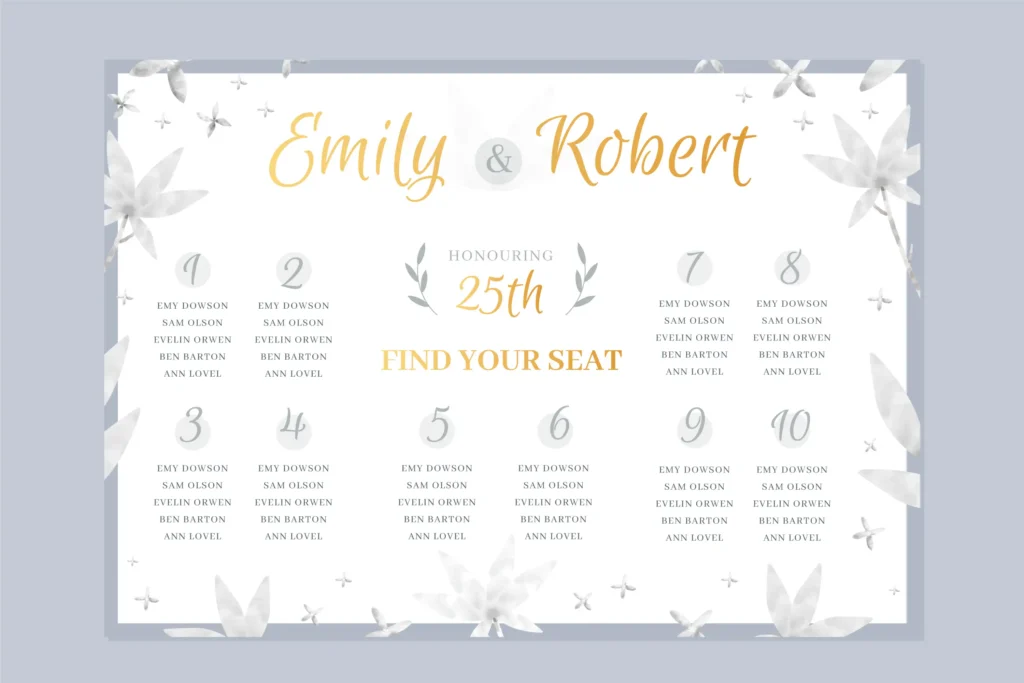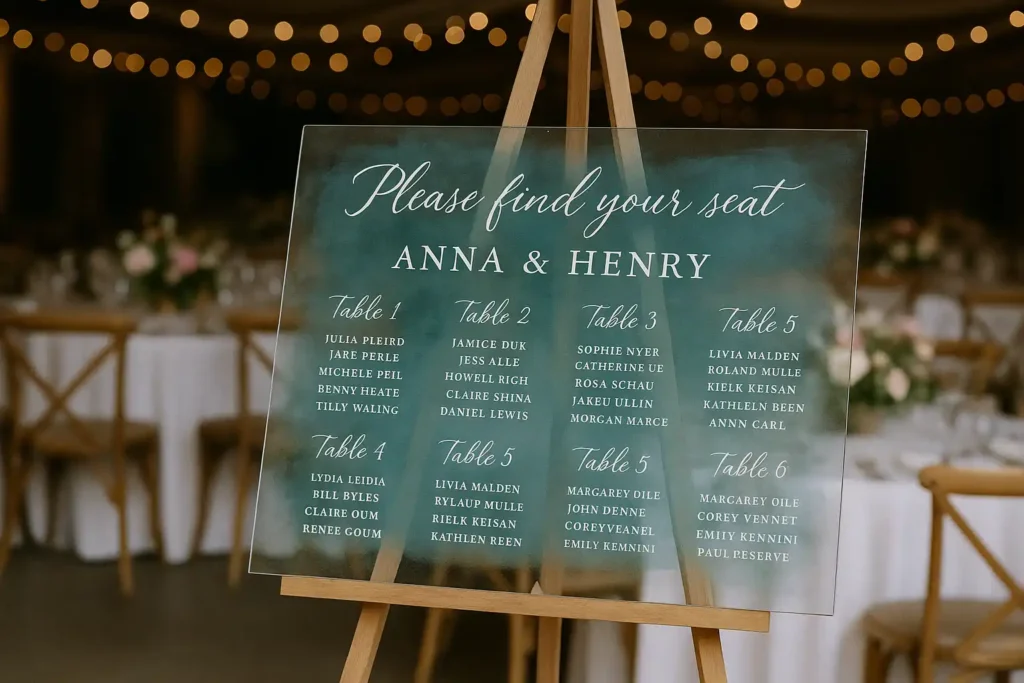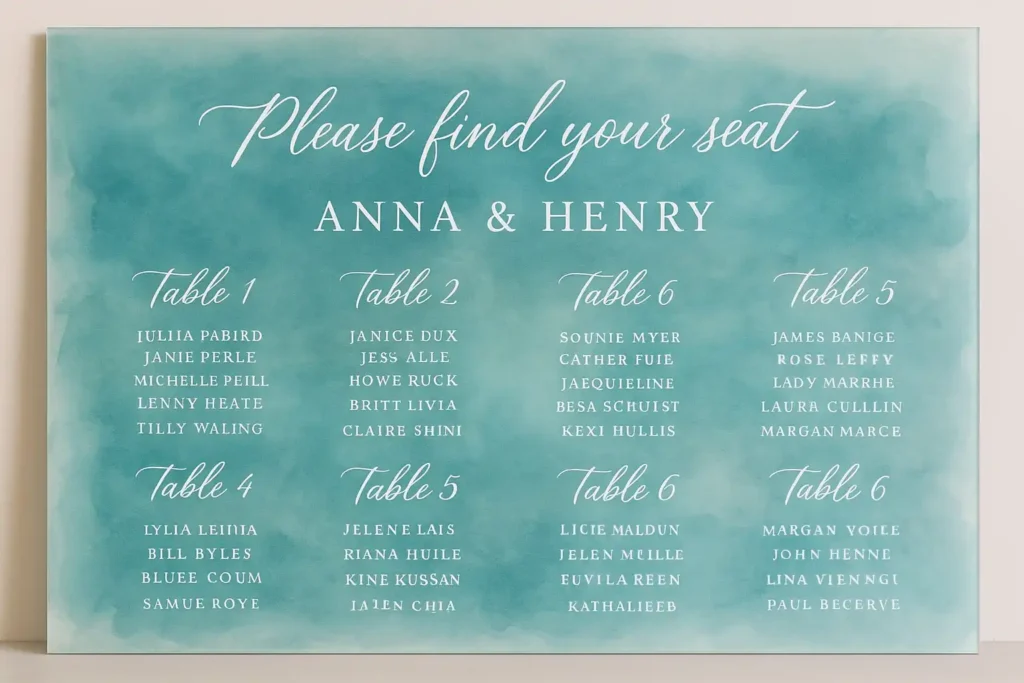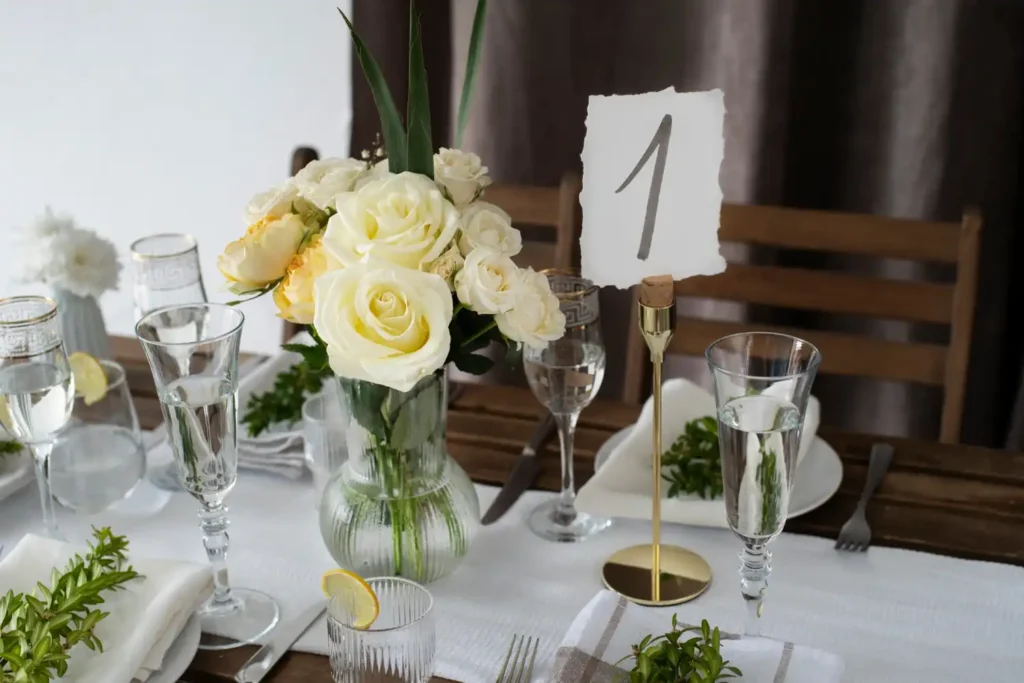Email: [email protected]
Phone: +44 7710 621141

Say goodbye to wedding seating chart stress! Our ultimate guide covers everything from etiquette for tricky family situations to creative display ideas. Create a flawless wedding seating plan that your guests will love.
The wedding seating chart: for many couples, it’s the last, complicated challenge of wedding planning. You’ve dealt with your guest list, settled on your food, and selected your music. And now you’re on to the strategic task of figuring out where to sit all your respectable guests at their ideal tables. The thought of the seating chart can be overwhelming, but it doesn’t have to be. This guide will help you turn a stressful undertaking into a polished and even creative part of wedding preparation. A carefully planned seating chart is your secret weapon for an enjoyable, smooth, and unforgettable reception.

Planning out seating is often regarded as a straightforward logistical task, but crafting a proper seating chart is critical to your reception for several reasons. It affects how your guests experience the reception, and it affects the flow of the event.
A thoughtfully arranged seating chart can assure all guests are comfortable and feel special. Seating guests near friends or people with similar interests assures that conversation can take place. Moreover, not knowing where to go when entering a room can feel awkward, so by having a seating arrangement, guests will be free to relax and enjoy themselves without the awkwardness of looking for a seat.
Think about it, you will have 150 guests trying to find a seat at the same time. Can you imagine the confusion? An organised seating chart allows guests to enter a room in an orderly manner, and smooths the flow of guests from cocktail hour to dinner without bottlenecks. Serving staff will appreciate it too; it’s much more efficient for servers, even if there are known dietary restrictions.
Think of your seating chart as the first piece of décor your guests will interact with at the reception. Whether it’s an elegant mirror with beautiful calligraphy or a creative display that doubles as a party favour, the chart sets the tone and introduces your wedding’s theme and personality.
Before you start arranging names, you need to decide which seating system works best for your wedding. While the terms are often used interchangeably, they serve different functions.
To help you decide, here’s a breakdown of the pros and cons of each method:
| Feature | Seating Chart | Escort Cards | Place Cards (in addition) |
| Guest Experience | Quick to scan (if alphabetical), prevents crowding at a table. | Cost can vary widely depending on complexity and if it’s a favour. | Highly formal and directive; best for plated meals with meal choices. |
| Preparation | Adds another layer of organisation and cost. | One large item to design and print; it can be updated digitally close to the day. | Interactive and can double as a favour. |
| Best For | Most weddings; very efficient for large guest counts. | Weddings where you want a creative, interactive element. | Very formal, multi-course dinners or when meal choices are tied to seats. |
| Cost | Cost can vary widely depending on complexity and whether it’s a favour. | Often, the most cost-effective option. | Individual cards to create, print, and organise alphabetically. |
Ready to dive in? Follow these steps to create your seating plan with ease.
Wait until you have all your RSVPs before you begin. Working with a finalised list will save you from having to make frustrating last-minute changes. Use a spreadsheet or a digital wedding planning tool to keep all your information, including plus-ones and dietary needs, in one place. Many online platforms like Zola offer easy-to-use seating chart makers.
Before thinking about tables, believe in “pods.” Create logical groups of your guests: your immediate families, extended relatives, college friends, work colleagues, and family friends. This gives you a high-level view of your social landscape.
Obtain a floor plan for your venue. Know the room layout, the shape and dimensions of all tables, and the number of people each table can seat comfortably. Number your tables on the plan so you can visualise the arrangement.

Begin placing the most important people at the tables to start. This will be you (at a sweetheart or head table), your parents, and the wedding party. By placing the important tables down first, you give yourself a foundation to build your remaining plan.
Now begin to place the groups made in Step 2. Try to maintain a balance at each table. Seat guests with people they know, but feel free to mix up the groups to help encourage guests to mingle. Be sure to think about who would enjoy chatting with whom.
Nearly every wedding has a few sensitive seating situations. Address them head-on with grace.
Once you have a draft, walk away for a day and then come back to it with fresh eyes. Ask a parent or a trusted member of the wedding party to review it. They might spot a potential issue you missed. Finally, read every name aloud to catch any spelling errors before you send your chart to the printer.
Traditional rules have relaxed, but a few key etiquette guidelines still help in making your most important guests feel honoured.
This is one of the biggest seating decisions you’ll make.
A Sweetheart Table is a small, private table for just the two of you.
A Head Table is a long table where you sit alongside your wedding party.
According to timeless etiquette from sources like the Emily Post Institute, parents are typically seated in the first row at the ceremony. For the reception, the bride’s and groom’s parents traditionally host tables of their own, surrounded by close family and friends. If parents are divorced, they should be seated at separate but equally prominent tables.
If you opt for a sweetheart table, your bridesmaids and groomsmen can sit with their significant others or together at one or two designated tables near you. This is often the most appreciated option, as it allows them to enjoy the evening with their dates.
Your seating chart is a perfect opportunity to be creative and add a personalised touch to your décor.


Getting together a wedding seating chart is more than just a task; it is a service to your guests. It is your opportunity to curate a room full of joyous conversations and create a seamless celebration. By establishing a process, using contemporary etiquette, and incorporating a little of who you are, you will have a plan that ultimately not only works but also becomes a lovely and quaint element of your day.
A seating chart is a master list on display. Escort cards are individual cards that guests pick up. Place cards are at the particular place settings to assign a specific seat.
Aim to finalise it 1-2 weeks before the wedding, after all your RSVPs are in. Have a digital copy that’s easy to edit for any last-minute changes.
For most weddings, assigning tables is sufficient and gives guests some flexibility. Assigning specific seats is generally only necessary for very formal, plated dinners with multiple meal choices.
This is where digital tools or escort cards shine. It’s much easier to add or remove an escort card or update a digital file than it is to reprint a large board. Always have a final, updated list to give to your wedding coordinator and caterer.
While tempting for a casual affair, it is highly discouraged for any wedding with more than 50 guests. A lack of a plan can lead to confusion, separated families, and a delayed dinner service.
Join our weekly newsletter and get the latest wedding trends, expert planning tips, and elegant inspiration delivered straight to your inbox.
No spam, no fluff - just beautifully curated content for modern couples.